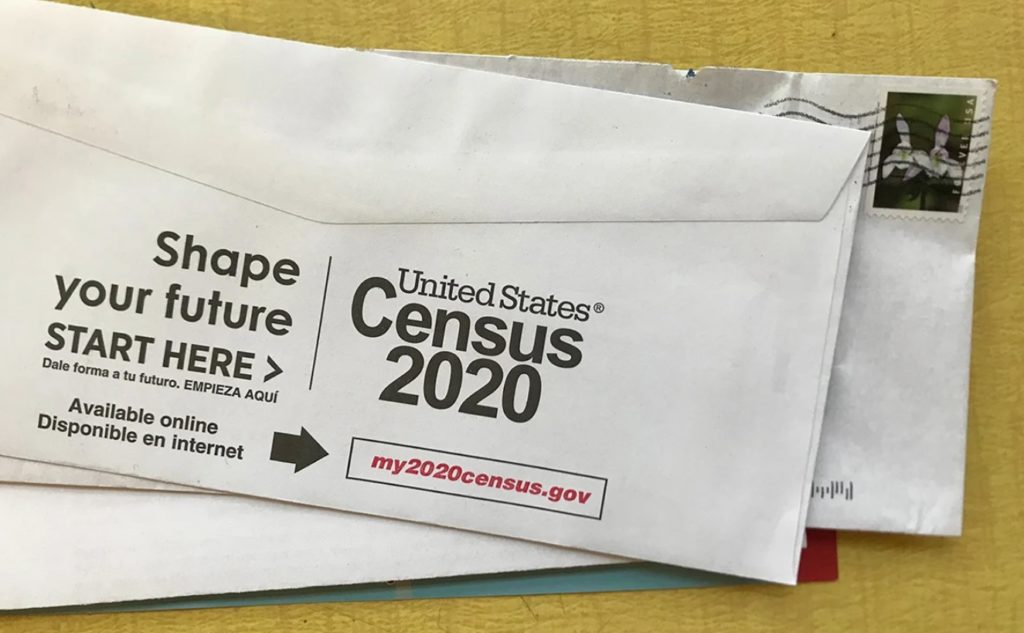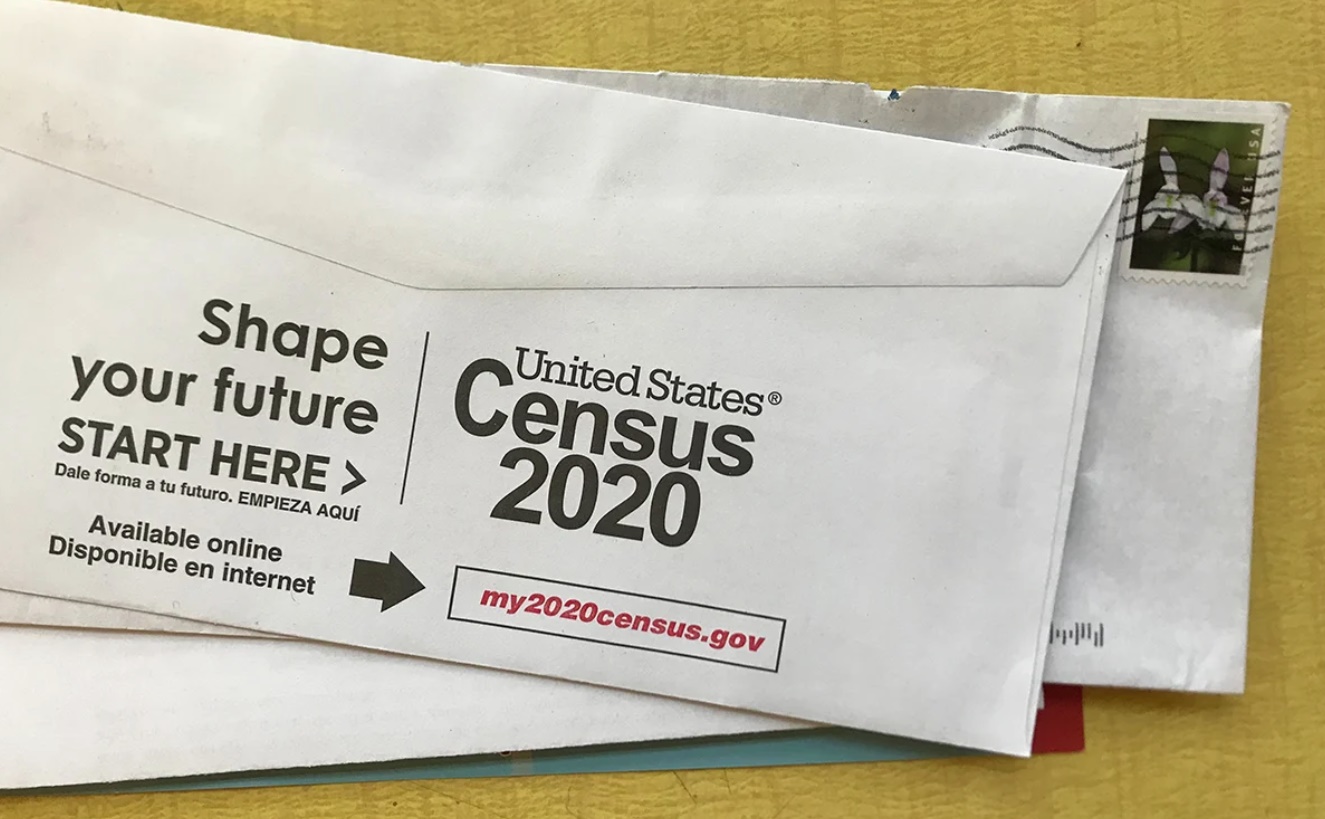by Grace Birnstengel. This article originally appeared on Next Avenue.

Photo Credit: Grace Birnstengel
The United States has conducted a census count every 10 years since 1790, and the 2020 census count is arguably its most important one yet.
America is more diverse than ever. In order to better accommodate and serve 330 million people in the U.S., the nation must first understand who exactly lives where, with whom they live and a bit about what their lives might look like.
The census isn’t just information for information’s sake. Census responses could impact you, your loved ones and your community in a variety of ways over the coming decade.
Why Is an Accurate Census So Crucial?
The ultimate purpose of census data boils down to two essential components: federal funding and representation.
On the funding side, hundreds of billions of federal dollars are dispersed annually using information gathered from census data — an amount of money that’s hard to conceptualize.
“It’s hard for communities sometimes to relate to such big numbers. What does that mean to my small community?” says Jeff Behler, director of the U.S. Census Bureau’s New York regional office.
Behler gives the example of a senior housing facility that has, say, 100 residents.
“If only eighty of those people get counted in the census, that particular center is going to get eighty percent of the [federal] funding it deserves for the next ten years. It doesn’t just affect those twenty people who weren’t counted. It affects all one hundred,” he explains.
Census data also informs how federal funding is distributed to improve public transportation or determine locations for places like libraries, senior centers and hospitals. Medicare, Medicaid, food stamps (now known as SNAP), public housing and road construction are other examples of federal programs that receive funding determined by data derived from the census.
“Older adults benefit from programs such as Medicare, Medicaid and SNAP, and if we don’t know how old they are, where they’re living and what they need, we can’t make sure they’re supported,” says Elana Kieffer, program officer for healthy aging at the New York Academy of Medicine, which is currently prioritizing census outreach. “Especially because so many older adults are living on a fixed income and rely on public benefits.”
Rosemary Rodriguez, who founded Together We Count — a Denver nonprofit focused on census outreach to hard-to-reach communities, points to aging in place as something better achieved with help from census data-informed programs.
“We know that older adults would prefer to age in their homes in place, but they might need additional community supports like Meals on Wheels or transit programs to get to appointments,” she says. “Those programs are what we call ‘census guided’ — they rely on population counts.”
On the representation front: States gain or lose congressional seats based on census data, and a state’s congressional delegation defines its representation in the Electoral College.
“In 2016, we saw how significant the Electoral College is. This is another reason it’s so important we get an accurate count, because we do use the Electoral College in federal elections,” says Kieffer. “It’s so all people are accurately and fairly represented, rather than just the people who completed the 2010 census.”
Older Adults: Hard to Count in 2020
For the first time in history, older adults are considered a hard-to-count population for the U.S. Census. That’s because 2020 is the first census being completed online (though phone and mail responses are still available).
Though America’s older population is overwhelmingly adopting technology, that’s not the case for everyone. A 2019 Pew Research Center survey found that fewer than half of Americans ages 74 to 91 have broadband access at home.
Other historically-undercounted groups include renters, people of color, people with limited English proficiency, recent immigrants, undocumented people, low-income people, LGBTQ people, people experiencing homelessness and people displaced by disasters.
“In our research, we have found that (some of those) groups with these overlapping demographic traits might be less likely to complete the census because they have a fear or mistrust of the government,” says Kieffer. “They worry if they give their information then the government is going to somehow come after them for one reason or another.”
These realities are what inspired organizations like Together We Count and the New York Academy of Medicine to prioritize outreach to these historically-undercounted populations in ways that motivate, educate and dispel fears and myths about census participation.
What the Census Isn’t
Just as it’s important for Americans to understand the purpose of the census and what it asks, it’s also key to eliminate common misconceptions and to know what’s not on the census.
Census data is confidential and only used to create statistics about the United States. Census responses are never shared with landlords, police departments, Immigration and Customs Enforcement (ICE) or the Department of Homeland Security.
The census does not ask for Social Security numbers, bank account or credit card information or anything on behalf of a political party. There is no citizenship question on the 2020 census.
“Every answer is protected under federal law and cannot be used against you,” says Behler. “We will send a paper questionnaire if people don’t fill it out. You don’t have to call to request it — you will automatically receive one.”
COVID-19 and the Census
Due to the coronavirus outbreak, the U.S. Census Bureau is strongly encouraging people who can respond online to do so, though options to complete the census by phone or mail are still available.
The Census Bureau has adapted some of its processes in response to COVID-19. For instance, the deadline to respond is now August 14 rather than the initial July 31. And census takers will wait to follow up in-person with households who have not responded until the end of May.
“Everyone knows we are in a deep health-care crisis, and a lot of it revolves around not having enough supplies and equipment,” says Kieffer. “Being counted in the census is more important than ever, because census data also determines funding for hospitals and other public health institutions.”
How to Complete the Census
Most households should have received an invitation to respond to the census sometime in March. You don’t need to wait for a paper questionnaire to complete the census. Refer to your mailing for information on completing the census online (my2020census.gov) or by phone (844-330-2020 for English, numbers for additional languages here).
“The next ten years’ decisions will be made on the results of the 2020 census. That affects everyone in every community,” Behler says.
The opinions expressed in this article are those of the author and do not necessarily reflect those of the Diverse Elders Coalition.

